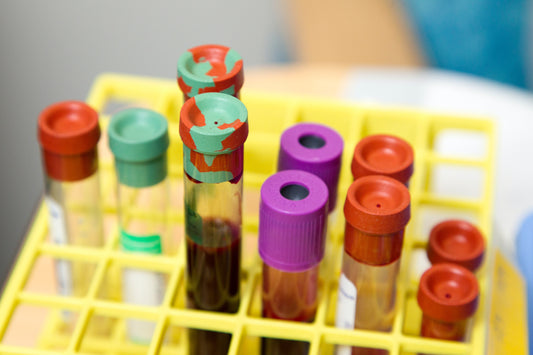Before we jump into understanding how unwanted hair loss occurs, we first need to appreciate the natural cycle in which a hair grows. There is a huge variety of normal hair growth amongst different women, and genetics. Hair grows almost everywhere on our bodies, apart from the soles of our feet, lips, palms of our hands, belly buttons, on scar tissue and some parts of the genitals.
Hair is made up of a protein called keratin. It’s growth is defined by four main phases:
- Anagen Pfhase
- Catagen Phase
- Telogen Phase
- Exogen Phase
The old hair falls out and the new hair continues to grow.
Why does our hair fall out?
It’s fair to expect as we get older our hair will naturally begin to thin. The average person loses somewhere between 50-150 pieces of hair a day. Today we want to talk about losing noticeable amounts of hair from ages as early as your 20’s.Have you ever found yourself noticing more hair than normal clogging up the shower drain, clinging to the back of your jumper, or falling onto your pillow? Rest assured you are not alone, Harvard Medical School suggests about 33% of women experience excessive hair loss at some point in their lives. For some women, hair loss is short term but for others it can be a long-going and highly worrying time.
Hair loss in women can occur for many different reasons:
- Hormonal changes
- Genetics
- Stress
- Thyroid dysfunction
- Weight loss
Hormonal Changes
Androgenetic Alopecia is the main type of hormonal hair loss experienced by both men and women. In men it’s recognised for causing an M shaped hairline, more commonly referred to as a receding hairline. In women, this type of hair loss is more defined by a gradual thinning of the hair that starts from the hair parting.
Health professionals use the Ludwig scale to classify the female loss of hair:
Stage I begins with thinning on the top of the head, it’s typically easy to cover with certain hair styling. In stage II the scalp starts to show with widening of the mid-part. Stage III is when the thinning diffuses with the top of the scalp having a see-through appearance.
Androgenetic Alopecia is caused by an imbalance of androgen hormones. If you’re an avid reader of our blog, you may recall androgens are an important male sex hormone which also play a role in regulating hair growth. One of the main androgens is testosterone. It is typical for women to have small amounts of testosterone and higher levels of oestrogen, in men, the proportion of these hormones is normally reversed.
Dihydrotestosterone or DHT for short, is produced from testosterone and is thought to be the main culprit responsible for hair loss. DHT links to receptors on the hair follicle making them shrink and therefore decreasing the length of time a hair is spent in the anagen (growth) phase.
Women with conditions that lead to higher than normal levels of testosterone, such as Polycystic Ovarian Syndrome (PCOS) are more likely to experience hair loss.
Menopause is another time where hair loss is more likely to be observed. When a woman goes through menopause, levels of oestrogen decrease. Estrogen supports hair growth by increasing the amount of time the hair spends growing so as estrogen declines, so does the length of growth time. At the same time, the relative level of testosterone becomes higher and women become more sensitive to DHT.
Similarly, pregnancy impacts the balance of these hormones. Throughout pregnancy, estrogen levels are elevated but have a subsequent rapid decline once the baby has been born. This can cause thinning and loss of hair which is typically corrected over time naturally as the body heals and hormones level out.
Thyroid conditions are also known to affect hair growth as the hormones produced by the thyroid affect the rate at which your cells work. In cases like hypothyroidism, the body produces too few thyroid hormones so the cells at the bottom of the hair strand are not replaced as efficiently. Therefore, hair is being lost at its normal rate but is not replaced. Similarly when the thyroid is overactive, like in hyperthyroidism, a condition called Telogen Effluvium can be triggered which also results in hair loss as detailed later on. Thyroid-related hair loss is normally temporary and normal hair growth is restored once the underlying thyroid issue has been treated.
Birth Control
Hormonal birth control in the form of pills, injections and patches can too cause hair loss. When taking birth control pills, levels of estrogen in the body can be elevated, or in some cases, levels of androgens may be elevated. Estrogen-based birth control pills don’t cause hair loss when you are taking them, the hair loss can be seen when you stop taking them. Elevated estrogen levels will rapidly decline causing a reduction in the length of time a hair strand will spend in the growth phase. On the flip side, testosterone-based birth control pills can increase the levels of circulating testosterone and DHT while taking the pill resulting in hair loss similar to the mechanism observed with PCOS.
Stress
When the body is faced with a cause of stress it switches into survival mode and growing hair is no longer a priority. Blood supplies that normally provide nourishment for the anagen phase of hair growth are diverted away from the hair follicle to combat the stress. In times like rapid weight loss, child-birth, surgery and other extreme mental, physical or emotional stress, hairs in the anagen (growth) phase and the catagen (resting) phase are shifted into the Telogen phase (shedding) phase. This process is referred to as Telogen Effluvium and typically occurs 6 weeks - 3 months after the stress.
Diet
Iron Deficiency Anemia
Though iron-deficiency anemia (IDA) does not cause hair loss in all cases, it does in approximately 50% of those with the condition. IDA is caused by very low stores of iron (serum ferritin) in the body. Ferritin plays a role in supporting hair growth as it clings on to the hair follicles in the anagen phase. When the body is running out of iron stores, it will draw the ferritin from places of low survival priority, such as the hair follicle, causing hair to fall out.
Insulin
Refined carbohydrates such as white bread, rice, potatoes, lollies, chocolate, pizza and pastas, when consumed for a prolonged period (often in combination with a sedentary lifestyle and long term stress) can cause the body to produce too much insulin. Insulin is one of the body’s key hormones and when produced in large volumes, can cause an increase in testosterone and DHT, therefore resulting in hair loss.
Treatment
Diet and Supplements
- Zinc is a well-recognised supplement to take for hair growth as it promotes ovulation and blocks the action of androgens.
- Choosing carbohydrates that are high in fibre will slow the release of sugar into the blood. This is preferable to consuming refined carbohydrates which can cause a spike in blood sugar levels. Slower release carbohydrates will reduce the production of insulin. Below are some simple swaps to start you off:
- White rice → brown rice
- White bread → multi-grain bread
- Pasta → wholemeal pasta
- Fruit juice → whole fruit
- Cornflakes → oats
- Instant noodles → brown rice noodles
- Rice crackers → grain and/or seed crackers
- For those with elevated levels of androgens, spearmint has been proven effective in reducing levels of circulating testosterone. Drinking spearmint tea or considering spearmint supplementation may reduce hair loss.
- If you do have an iron deficiency then considering iron supplementation and choosing iron-rich foods such as chickpeas, nuts and seeds, green leafy vegetables, meat and fish and dried fruit including apricots and figs, are of high importance.
- Some foods including those listed below are recognised for contributing to stress when consumed. Limiting the intake of these foods may be helpful in the case of stress-related hair loss.
- Sugar
- Alcohol
- Caffeine
Lifestyle Changes
In the case of stress-related hair loss, making a lifestyle change to reduce the overall stress is the most effective treatment, though we appreciate this can be easier said than done. Facilitating conversations with your loved ones and incorporating practices like meditation, mindfulness, yoga and exercising regularly can be great starting points.
Treatment Options




